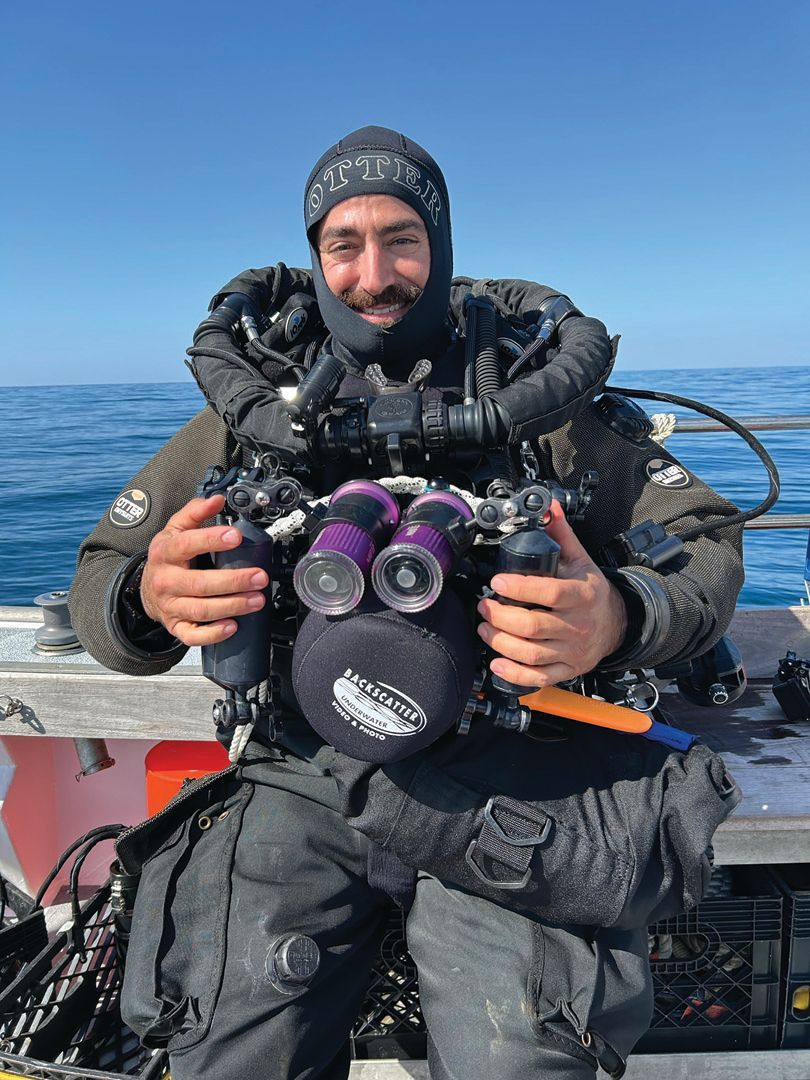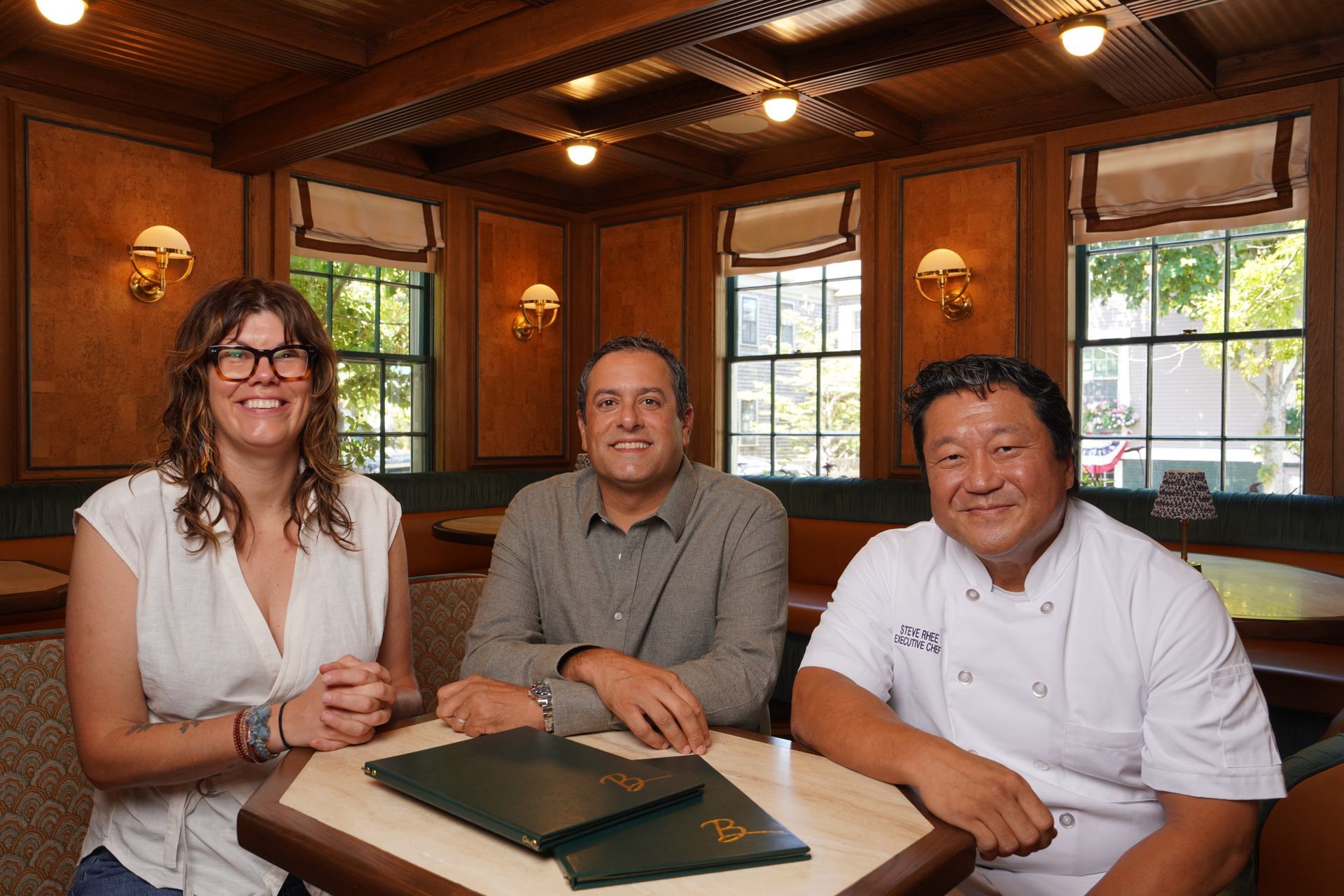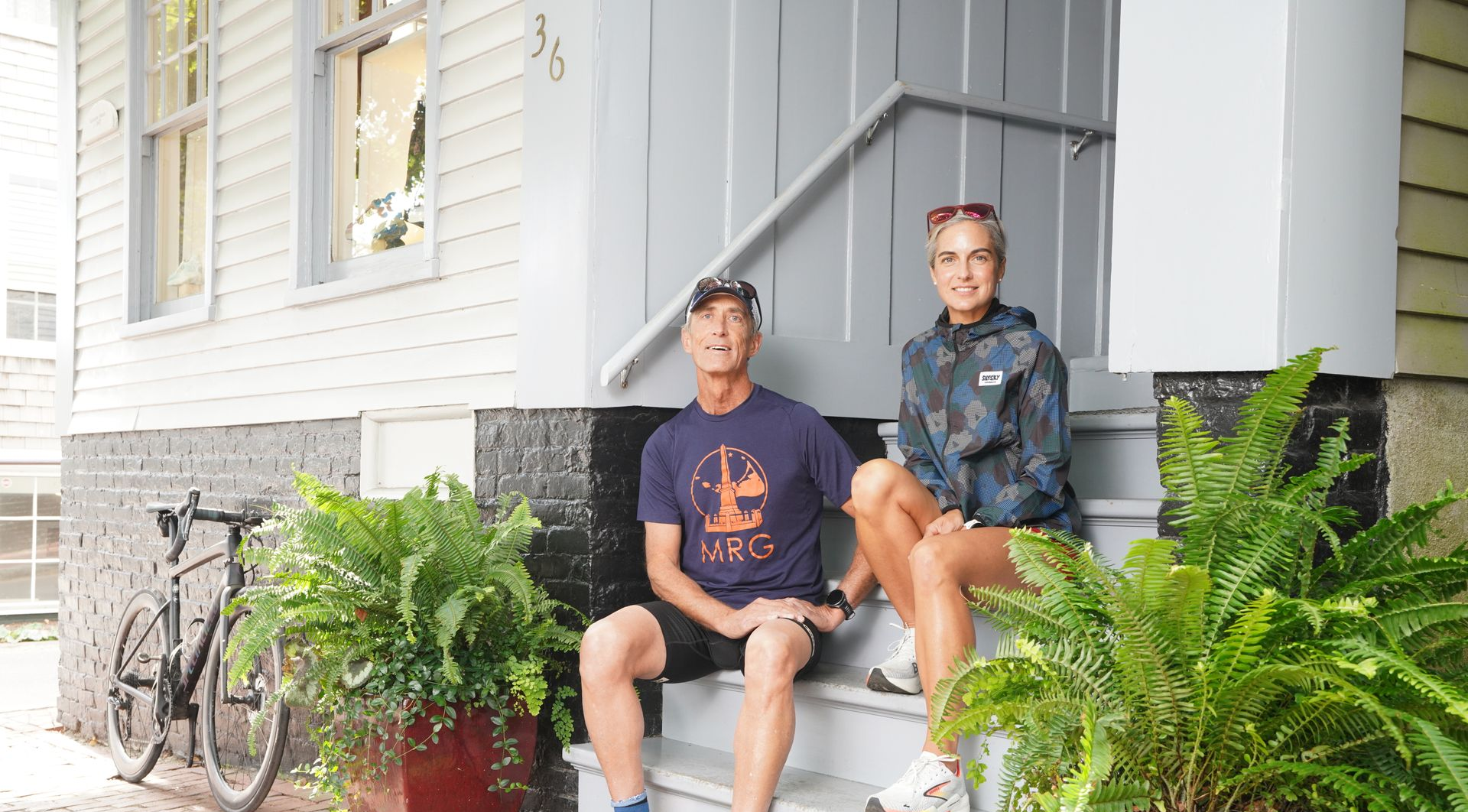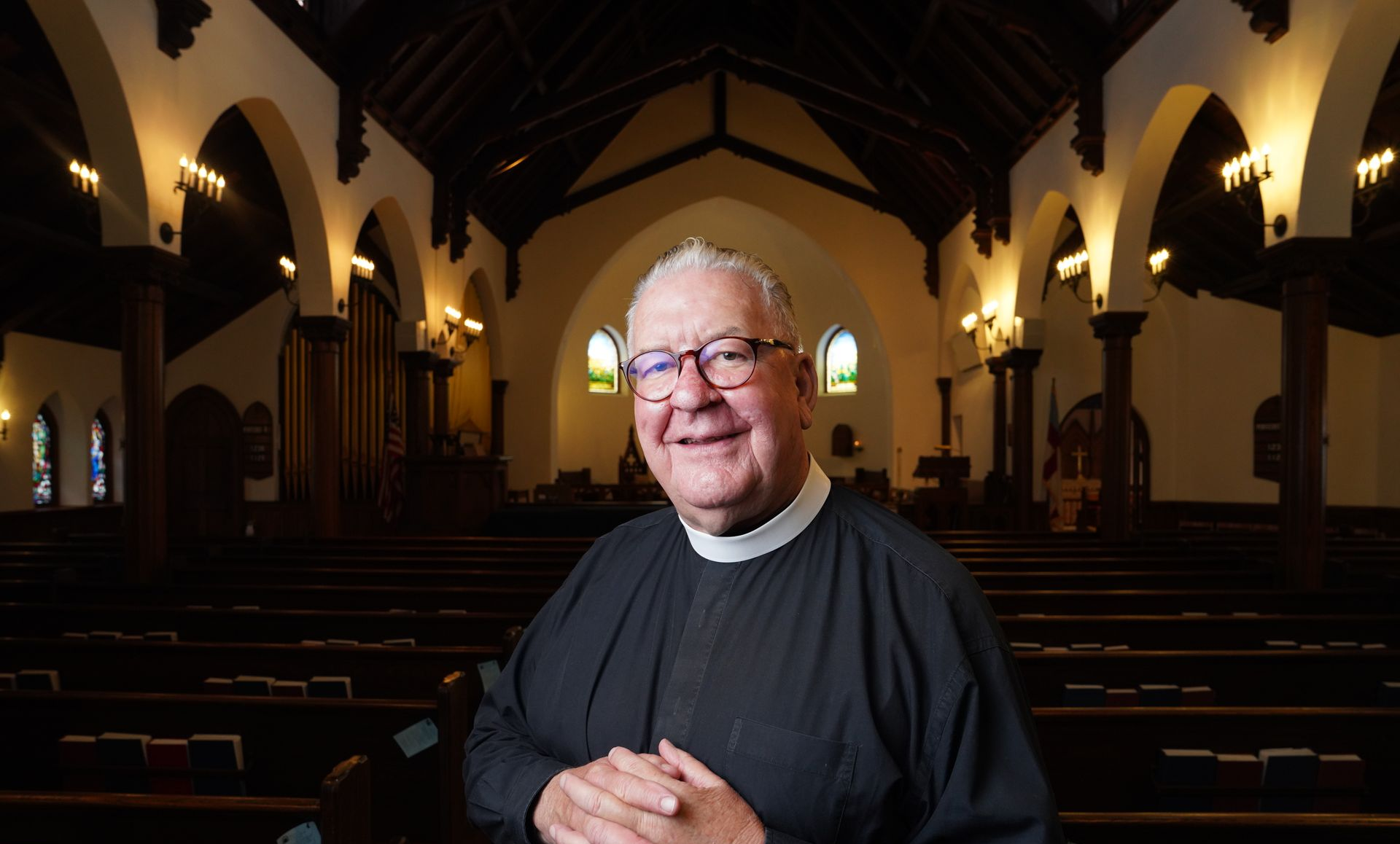Beneath the Surface
Shipwreck hunters find lost ship offshore—and lose one of their own.
Written by Brian Bushard
Photography by Kit Noble
Nearly 150 miles east of Nantucket, the husband-and-wife team of Joe Mazraani and Jennifer Sellitti have found what they were looking for. Over 200 feet below the surface, a blip on the sonar shows something big. It first appears as a giant object—possibly a rock or a shipping container—on the seafloor. Fishermen know these blips as “hang logs,” or the exact coordinates where fishing nets have become stuck in the past. For fishermen, they’re areas to avoid. For Sellitti and Mazraani, they’re treasure maps.
Mazraani and crew member Eric Takakjian anchor their boat, the D/V Tenacious, to the object and dive down some 200 feet, where they become the first shipwreck hunters to identify the wreck of the Seiner, a Boothbay, Maine-built fishing vessel traveling out of New London, Connecticut, that sank in Georges Bank in 1929, a maritime disaster that killed all 21 crew members on board. By diving to the seafloor, Mazraani and Takakjian are the first people to lay eyes on the ship in nearly 100 years.
“Shipwreck hunting has been a lifelong passion,” Mazraani said aboard the Tenacious, moored in Nantucket Harbor, just one day before hitting the open ocean in July to find the lost wreck. “Diving is a tool; it’s a means to interact with a specific point in history. It tells the history of mankind, of commerce, immigration, cross-cultural ties.”
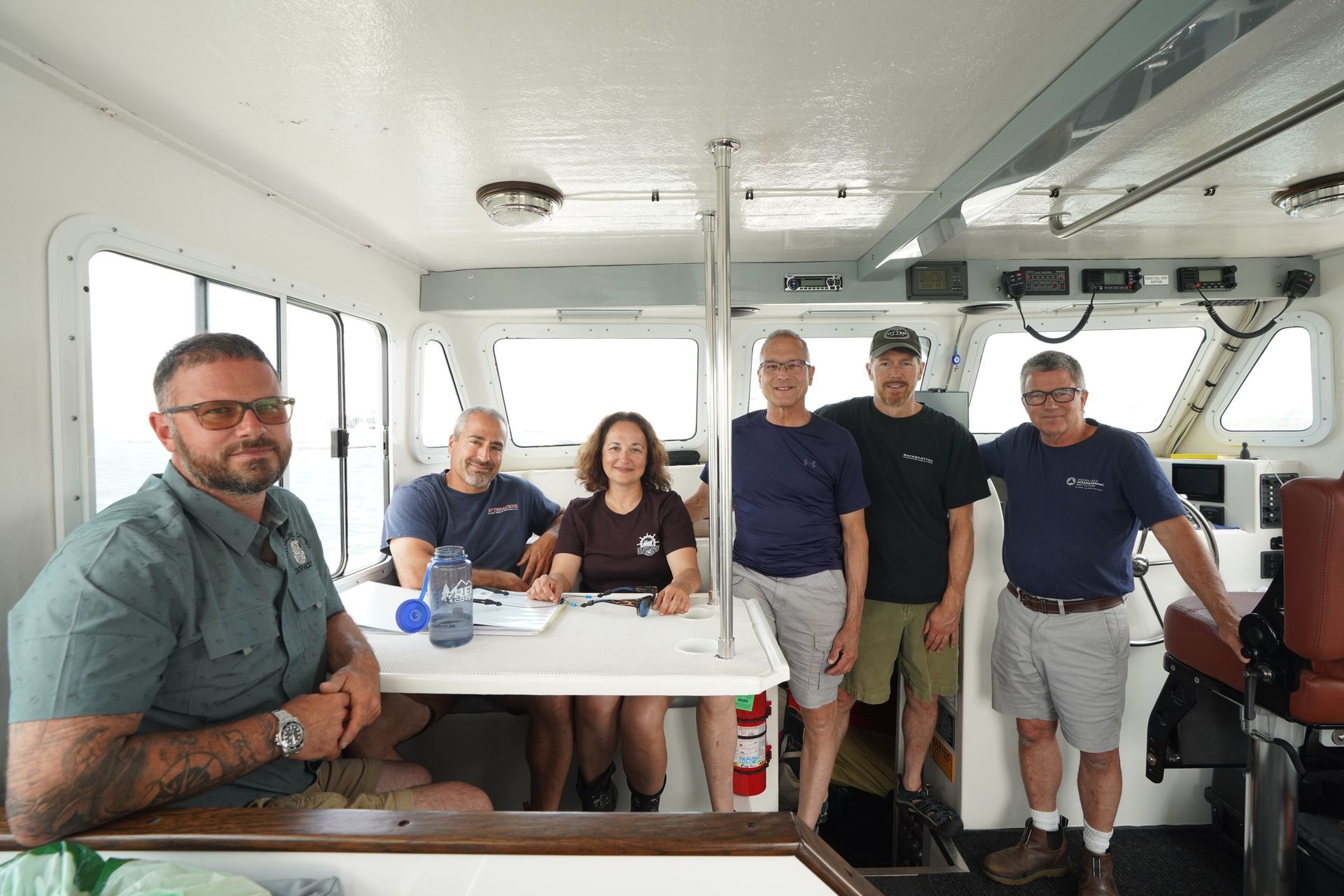
Diving hundreds of feet below the surface comes with inherent risks, something each member aboard the Tenacious is well aware of. This is where the story takes a tragic turn. Just three days after N Magazine sat down with Mazraani and his Atlantic Wreck Salvage crew, Mazraani died while exploring another shipwreck in Georges Bank, sending shock waves through the diving community. Mazraani had been renowned as one of the most skilled shipwreck hunters and technical divers in the world. There was no reason to suspect diver error or equipment failure, the company stated.
“We’re grieving and we will be forever,” said his wife, Sellitti, on a phone call one month after the trip. “We’re working together to figure out what’s next. Everybody who’s been apart of the crew is looking forward to continuing to move forward, continuing to work and continuing to explore the shipwrecks of the North Atlantic. What that looks like will be difficult because Joe was synonymous with the Tenacious, so stepping into that void is really difficult.”
Mazraani and Sellitti had made shipwreck hunting an annual endeavor for over a decade. For most of the year, they were attorneys, with Mazraani practicing criminal and civil law, and Sellitti serving as a public defender for the state of New Jersey. But for several weeks in the summer, the only place they wanted to be was on the open ocean, exploring shipwrecks—a lifelong passion that’s become a self-imposed mandate to bring closure to the families of the passengers lost at sea. “Some will say that the type of exploration Joe engaged in is not worth the risk. If viewed in isolation, perhaps it isn’t,” an online tribute stated. “But nothing Joe did happened in isolation. It was his way of life. Joe understood better than anyone that life offers no guarantees. He lived every moment fully, without compromise. He did not want to die doing what he loved—none of us do. He wanted to survive it, to grow old doing it. But Joe embraced a life of extraordinary risk, and he would be the first to say that doing so was far better than a long life half-lived.”

Last August, nearly 100 nautical miles east of Nantucket, Mazraani and Sellitti found another wreck they had been researching for years: the French passenger vessel Le Lyonnais. Once considered one of the finest ships in the world, the iron-hulled steamer had been resting silently for nearly 175 years, gradually collapsing in on itself in 250 feet of water. Le Lyonnais was the victim of one of the greatest hit-and-runs in human history when it was struck by the American ship Adriatic on November 2, 1856. Over 100 people died on board the ship.
“When you start to learn more about the passengers, then you start to care about these people and ultimately you feel like you have a duty to tell their stories and a duty to find their final resting place,” Sellitti said. “That’s the very definition of obsession. It snowballs to a point where I have to find this shipwreck because I’m not going to be able to rest until I do.”
The ship they laid eyes on was not a typical passenger vessel for its time. Le Lyonnais was built in perhaps one of the greatest transition periods in maritime history, when traditional sails gave way to steam engines. As a result, Le Lyonnais was built with both masts and smoke stacks. A New York Weekly Herald reporter at the time wrote that it was “built in the strongest manner” and “fitted and sound in every respect.” Its cabins were fitted with Venetian blinds. Its engine was thought of as premier. “People were grappling with the idea of burning fires in the underbellies of ships, which sounded weird at the time, so they wanted a backup of sails,” Sellitti said. Even with modern technology, finding a shipwreck can be an excruciatingly long endeavor, with no guarantee you’ll ever find what you’re looking for.
Most of that work actually happens on dry land, behind a computer and in research libraries. “Shipwreck hunting is 95% research, and only 5% of it happens on the water,” Sellitti said. “The ocean is enormous. It’s not a needle in a haystack; it’s more like a needle in a field full of haystacks.” That, and the danger factor. “Le Lyonnais is really pushing the boundaries of citizen shipwreck exploration to the extreme,” Sellitti admitted before the trip. “These dives are the same thing as when you see [free solo climber] Alex Honnold climbing a 1,000-foot wall without a rope.”
In the case of Le Lyonnais, the initial search area started out as 100 square miles, more than twice the area of Nantucket in a stretch of ocean known for dangerous currents and where visibility on the seafloor can be as clouded as just 20-30 feet. Months before her crew hit the water, Sellitti found herself researching not only information about the sunken ship, but the accounts given to local newspapers by its survivors weeks after the crash. At one point, Sellitti made an Ancestry.com account for each survivor to learn more about their backgrounds and motivations, and why any of them might lie to the press. “From being a lawyer, I’m used to multiple witness statements and trying to stack them on top of each other to determine who’s telling the truth and who’s not,” she said.
Sellitti and Mazraani had been planning on returning to Le Lyonnais this summer, though the dive never happened. “Who doesn’t want to find a shipwreck?” Mazraani told N Magazine in July. “It’s the kind of stuff you think about when you’re a kid.”
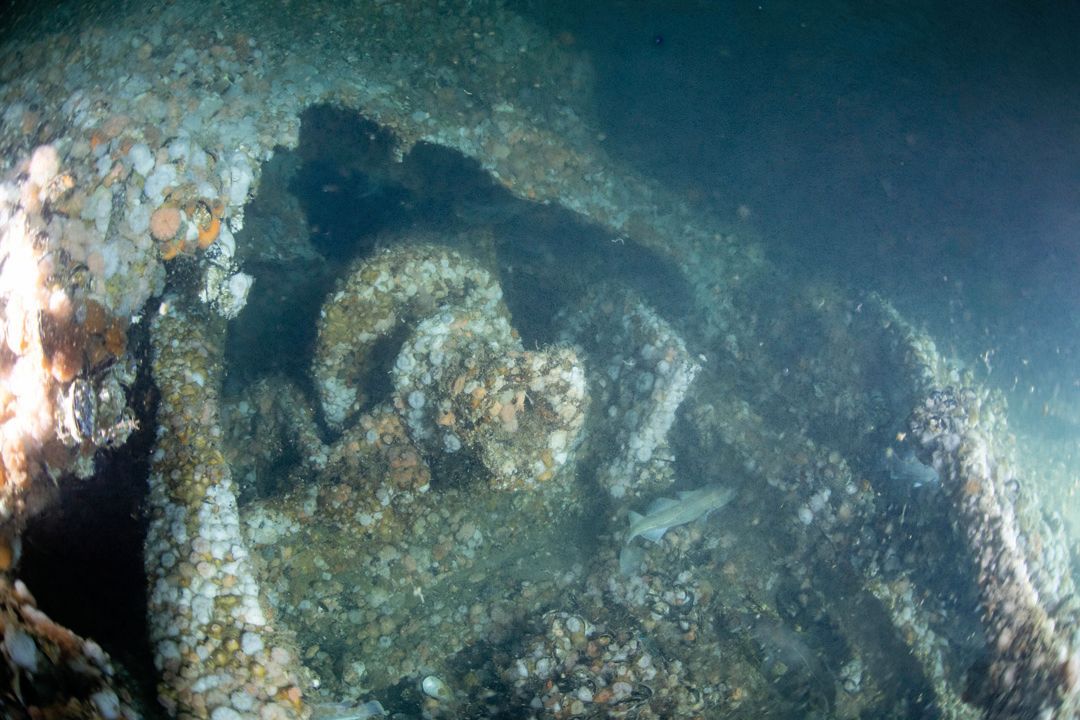
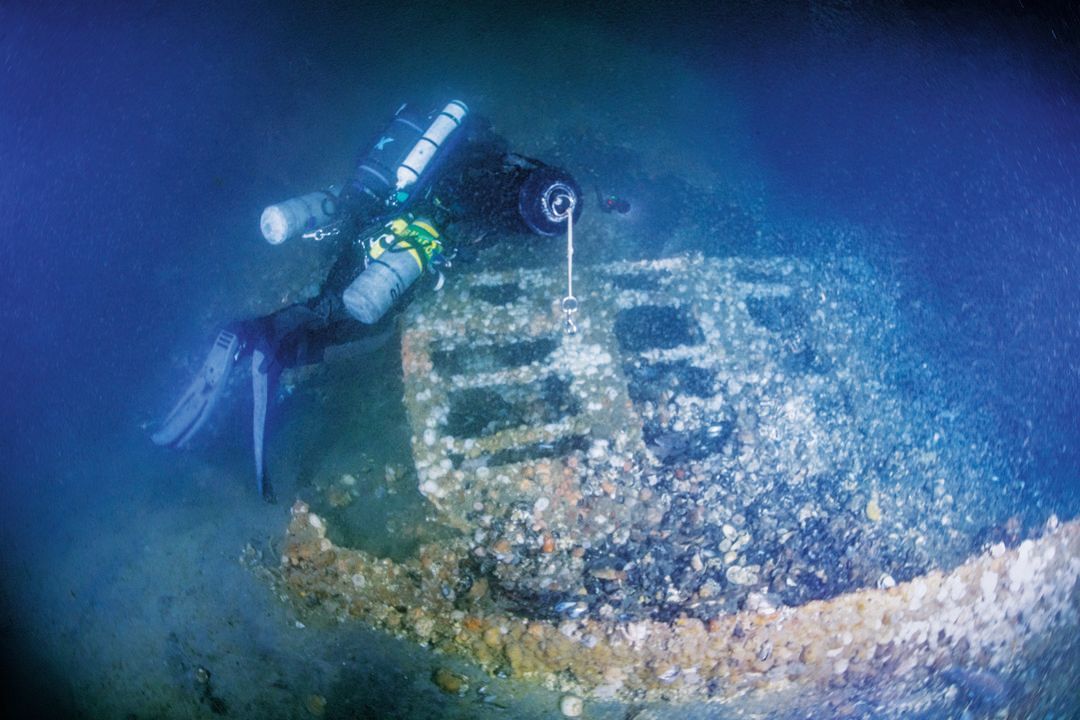
In many ways, Mazraani was the face of the franchise for Atlantic Wreck Salvage. Originally from Lebanon, Mazraani grew up summering on the Mediterranean, before immigrating at age 15 to the United States. According to an online tribute, he received his scuba diving certificate in the mid-1990s, and quickly became obsessed with diving for shipwrecks on the Eastern Seaboard.
He founded Atlantic Wreck Salvage in 2010, buying the Tenacious specifically to explore shipwrecks in deeper water. In his 15 years with Atlantic Wreck Salvage, he dived to some of the most iconic shipwrecks in the Atlantic and Mediterranean, including the Andrea Doria, the HMHS Britannic—the Titanic’s sister ship—and the Lusitania, the passenger ship whose sinking roped the United States into World War I. Finding shipwrecks was not only exhilarating; it was bittersweet knowing the shipwrecks his crew identified had for years served as graveyards for passengers lost at sea.
As for what comes next for Atlantic Wreck Salvage, Sellitti isn’t quite sure. In a sense, it’s fitting that their last discovery with Mazraani was the Seiner, a ship that Atlantic Wreck Salvage had deemed a high priority to identify because its entire crew had gone down with the ship. Sellitti hopes the identification of the wreck can provide some long-awaited closure for the descendants of the Seiner’s crew. “We are never going to be Joe Mazraani, but together we can be something he would be proud of,” Sellitti said.
In his tribute, Atlantic Wreck Salvage announced the creation of the Captain Joe Mazraani Memorial Fund to promote shipwreck exploration and inspire the next generation of hunters. “Of utmost importance to Joe was educating the public about maritime history and inspiring the next generation of shipwreck divers,” the online tribute stated.
The tribute continued: “What is important to remember is that Joe died in the happiest place he had ever found, a place he spent so many years of his life trying to reach: aboard D/V Tenacious, miles and years from where he started, and with Jennifer and some of the people he loved the most right there with him. He would not want grief to stop us. He would want it to ignite in us the same spirit and passion that drove him—to relentlessly pursue the things we love, to share them with the people we love, and to live as if every day is a rare and extraordinary gift. That is his legacy."
